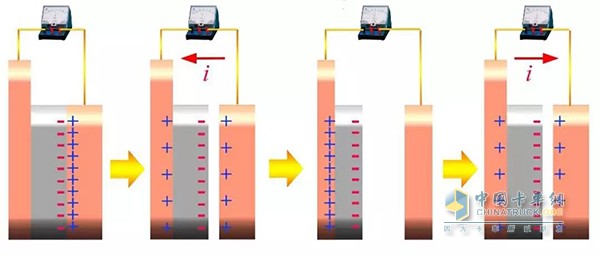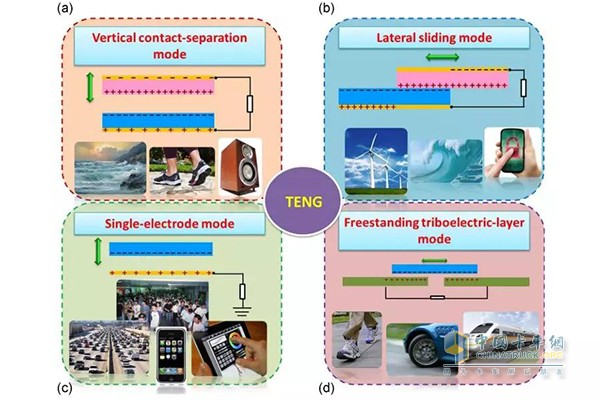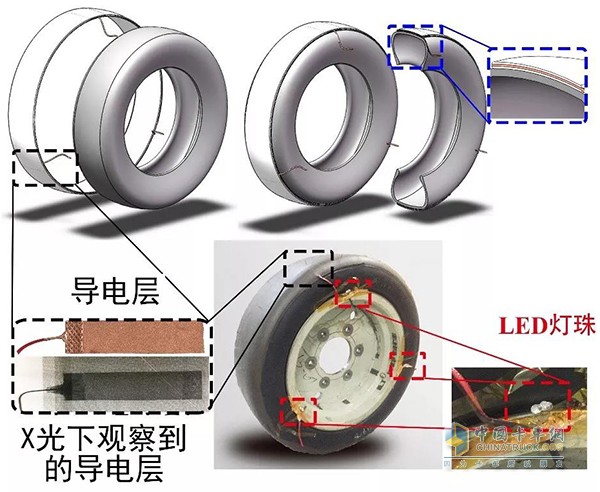Smart tires that will generate electricity from themselves come! Interpretation of Linglong "Black Technology" tires
On November 28, 2018, it was learned that Professor Zhang Liqun from Beijing University of Chemical Technology and Professor Wang Zhonglin from the Beijing Institute of Nano-Energy and Systems, Chinese Academy of Sciences, teamed up with Linglong Tire , based on friction nano-generators, combined with the characteristics of white carbon black tires . Green power generation tires with intelligent sensing capabilities. Using friction nano-generators to recover the energy generated by tire and ground friction: white carbon black tires have a large static electricity, which limits the application of white carbon black tires to a certain extent, but friction nano-generators can A negative effect is transformed into a positive effect, and this characteristic is used to achieve the purpose of recovering energy. If this idea can be realized, the energy wasted by the tire can be recycled back, which will save energy and reduce emissions in the future and alleviate the energy crisis. Undoubtedly it is of great significance. Based on this idea, the team of Professor Wang Zhonglin, the chief scientist of the Beijing Institute of Nano-Energy and Systems, Chinese Academy of Sciences, and the team of Professor Zhang Liqun of Beijing University of Chemical Technology have conducted several consultations to discuss and determine the feasibility and value of this program. Tire giant---Shandong Linglong Tire Co., Ltd., which has gathered many forces and lasted for several decades, overcame many problems and difficulties, and prepared the first generation of friction nano-powered green smart tires, the results of which were obtained by PetroChina and The first prize of the National College New Concept Tire Design Competition hosted by the Ministry of Science and Technology of the Ministry of Chemical Industry was unanimously recognized and praised by the judges. The related research results were published in the "Top Boost Nano Smarterator Boosts Smart Green Tires" in the Advanced Functional Materials. The first author of the article is Dr. Wu Wenjie from Beijing University of Chemical Technology. He is a professor at the Institute of Nano Energy and Systems, Chinese Academy of Sciences. What is a friction nanogenerator? The friction nano-generator was first proposed by Professor Wang Zhonglin in 2012. The main principles include electrostatic induction effect and frictional electrification effect, as shown in the following figure: When the rubber material (the gray portion in the figure) and the copper (the red portion in the figure) are in contact, since the attraction ability of the two is different, the charge separation occurs at the interface, and a part of the electrons on the copper surface flow into the surface of the rubber material, so that The rubber material is negatively charged, the copper strip is positively charged, and then the copper plate and the rubber begin to separate. Since the rubber material is insulated, the surface charge will be fixed. Since the copper plate and the copper plate behind the rubber are connected, the potentials must be equal. Therefore, a part of the positive charge will flow from the copper plate on the right side of the rubber to the copper plate on the left side of the rubber, as shown by the red shear head in the figure. When the right copper plate moves to the maximum displacement, it stops, and then approaches the copper plate again. At the attraction of the charge, the positive charge re-flows back to the copper plate on the right side until the positive charge in the copper plate is equal to the negative charge on the rubber surface. In this process, the current flow direction changes, so the current obtained by the friction nano-generator is AC, not DC. In this process, the mechanical force changes the potential of the charge due to the separation of the charge, completing the conversion of mechanical energy to electrical energy, which is the basic principle of the contact separation type friction generator (Fig. 2-a). In addition to this most basic mode of operation, there are three other modes of operation for frictional nanogenerators: the sliding mode (Fig. 2-b), the single electrode mode (Fig. 2-c), and the free friction layer mode (Fig. 2). -d), as shown in Figure 2. The friction nano-generator is a new type of energy technology. Compared with the traditional electromagnetic generator, the friction nano-generator has many advantages such as wide application range, high work efficiency, light weight and easy manufacture. Therefore, friction nano-generators have more applications in energy recovery and new energy utilization. At the same time, because the friction nano-generator is sensitive to the environment, environmental changes can easily cause changes in its output current, because the friction generator is always used for intelligent self-driving sensors. The so-called self-driving sensors are relative to ordinary sensors. We know that ordinary sensors contain power supply devices that supply energy through power supply, while self-driven sensors refer to the ability to extract energy from the working environment. This part of the energy to work with the sensor, this sensor has the advantages of maintenance-free, low-cost long-term use. In the future era of the Internet of Things and artificial intelligence, in the context of the need for massive sensors, this sensor that does not require replacement of power or charging maintenance is undoubtedly the best choice. Why choose a white carbon black tire? In the tire industry, one problem that has plagued the tire industry for a long time is the magic triangle problem of the tire. Due to the inherent properties of the rubber material, it is difficult to balance the wear resistance, wet skid resistance and rolling resistance of the tire. As a new generation of rubber nano-reinforcing filler, white carbon black material has certain advantages in terms of improving wet skid resistance and reducing rolling resistance. This allows the white carbon black tires to have excellent fuel economy while taking into account other properties. However, since the white carbon black tire has strong static electricity, it is necessary to add a part of carbon black in actual use to pass the tire resistance test. This unique disadvantage has become an advantage when combined with a friction generator and can be used to recover some of the mechanical energy lost by friction. What is the working principle of power generation tires? Since the motion state of the tire during operation is different from the four basic modes mentioned above, the friction nano-generator in the power generation tire needs to be separately designed in combination with the actual working condition of the tire. We place the conductive layer in the middle of the tread layer, using the tire tread as the friction layer of the friction nano-generator, and the conductive layer is built therein, so that the same process as the ordinary tire can be used in the tire molding step. The structure of the power generation tire is shown in Figure 3. In a power-generating tire, the conductive layer built under the tire tread is continuously changed in the process of rolling the tire due to the distance from the ground, and then the potential change occurs. When the conductive layer is grounded or connected to a place with a low potential, , will form an electrical signal of the exchange. This is a combination of single-electrode mode and contact-separation mode, which is how the friction nano-generator tire works. Why can it be called a smart tire? Since the friction nano-generator has high sensitivity to the external environment, the change of the external environment will cause the change of the output current of the friction nano-generator, because the friction nano-generator can be used as a sensor, the first generation of intelligent tires reported in this paper. It can be used as a tire pressure sensor. Because it does not require external power supply, it can spontaneously extract energy from the environment, and can achieve passive maintenance-free self-powered sensors. At the same time, since the conductive layer is uniformly distributed in the tire, the interval between the current signals is the time when the tire rotates by one third of a turn, so that the speed signal of the vehicle can also be obtained from the signal of the power generating tire. The self-driven sensing performance of the friction nano-generator tires in this paper is very different from that of the conventional tires or the ordinary tires with active sensors. In this self-driving sensor, the tires will work when they are working. The sensor signal, the signal also reflects the state of the tire, which is equivalent to the tire itself "telling" us his state, rather than we actively read. The further popularization and maturity of future unmanned driving is based on numerous sensors and program algorithms. Tires are an important part of the car and the only material that directly contacts the ground. There is no doubt that smart sensing in tires The device is also extremely important. Whether it is energy saving and emission reduction or engineering maintenance cost considerations, it is of great significance and huge potential application value. How much electricity can a generator tire generate? 9cm2 of this kind of tire tread material can get 21μA current output and 150V voltage in the laboratory. In actual use, the specific value is difficult to measure due to the high-speed rolling of the tire. Considering that this is the first generation of products, there is still a lot of optimization space in terms of material and structure. According to the current reported high value of 500W / m2, each car can save 800kJ energy per year, if all vehicles in the world change the generator tires, it can save 2.5 * 10 ^ 8 kg of gasoline. Problems and future research plans As a tire, since copper is added as a conductive layer in the tire, the life and durability of the tire are inevitably affected. The first generation of friction nano-generator tires is more to explore its feasibility. There are fewer other properties for the tire. As a friction nano-generator, the structure of the friction nano-generator uses the most basic and simple structure because of the need to cooperate with the existing production process, so the power generation performance and sensing performance are not sufficiently prominent. So the main work we will follow will focus on the following four aspects: 1. Optimize reliability and durability Tire as a safety-related product, reliability and durability are very important performance indicators. In the following work, we will use the new materials and optimize the structure of the friction nano-generator to make it as possible to meet the existing requirements. Friction nano power tires. 2. Increase power generation The main energy recovered from friction nano-generator tires is the energy lost by the friction between the tire and the road surface. Since the energy of the rubber material is still very large, the energy recovered by the first generation of power generation tires is still relatively small, so the amount of power generation is There is also a large optimization space. The future increase in power generation is also one of our main goals. 3. Enhance sensing accuracy and range Since the first generation of friction nano-generator tires was designed at the beginning, only the power generation performance was considered, and the performance of the sensing was not taken into consideration. Therefore, the first generation of power generation tires can only be used as sensors for tire pressure monitoring, and The accuracy is not high, and the precision optimization and range expansion of tire smart sensing (such as tire temperature sensor) will be part of our work in the future. 4. Research and development of related equipment At present, the energy obtained in the tires does not find a suitable use scenario. Next, we will design the corresponding equipment by considering the power generation and the working state of the tires, so that the recovered energy in the tire can be reasonably and efficiently utilized. stand up.
L(R) series pumps are cantilevered horizontal, centrifugal slurry pumps ,which are also called Light Duty Slurry Pumps. They are designed for continuous pumping of lower abrasive and lower density slurries. The liner and impeller of this type pump can be replaced with wear-resistant metal or rubber material. They are widely used in metallurgical, coal, mining, building material.
Product Feature
1. High capacity bearing design.
2. The shaft seal can adopt packing seal, expeller drive seal and mechanical seal.
3. High speed with small volumes saving floor area.
5. The discharge position by request may be rotated 8 different angles at interval of 45 degrees.
L(R) Series Light Duty Slurry Pumps L(R) Series Light Duty Slurry Pumps,Light Slurry Pumps,Light Abrasion Slurry Pump,Light Abrasion Pump,Light Slurry Pump,Light Slurry Pump Shijiazhuang Soarho Machinary Co.,Ltd , https://www.xhslurrypump.com Figure 1: Working principle of a friction nanogenerator
Figure 1: Working principle of a friction nanogenerator  Figure 2: Four basic modes of friction nanogenerators
Figure 2: Four basic modes of friction nanogenerators  Figure 3: Structure and test physical map of friction nano power tire
Figure 3: Structure and test physical map of friction nano power tire